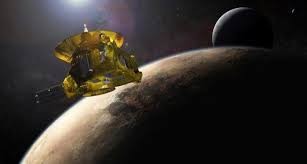Scientists and space fans considered the arrival of the New Horizons spacecraft at Pluto system as the beginning of discovering many mysteries associated with the dwarf planet.
The latest images from New Horizons revealing Pluto's extraordinary geological features have left scientists and NASA bewildered even as the ongoing exploration offers a treasure trove of new information.
The new photos were taken during the spacecraft's flyby of the planet on July 14.
According to principal investigator of NASA's New Horizons project, Alan Stern, the images reveal different landforms and sophisticated processes found on Pluto, NASA reported.
The New Horizons investigation began its download of the latest Pluto photos and other significant information over the Labor Day last weekend. From the information received so far, the number of images has doubled the number of samples seen at 440 yards per pixel resolution.
Some of the new features perceived on the surface of Pluto include nitrogen ice flowing from mountain regions, possible dunes, and networks of valleys. the images also indicate numerous sections of the surface that portray jumbled mountain ranges that mirror the terrains perceived on Europa, the icy moon of Jupiter.
According to Toledo Blade, scientists did not expect to find dunes on the surface of Pluto. However, Stern said that scientists detected large areas on the dwarf planet that have dunes, although caution was being taken in labeling the features as dunes until there is sufficient confirmation.
A major controversy stems from the claim that the air present on modern Pluto is much too weak and thin to facilitate formation of these fields of dunes that could go up to several kilometers. The only speculation is that Pluto must have possessed a stronger and denser atmosphere at some point in history.
However, if the features are dunes, then there must be other forces apart from wind that could have created them.
As a result, the origin of the dune-like features is unknown, and whether they emanate from particles of ice of small rocks also remains a mystery.



























